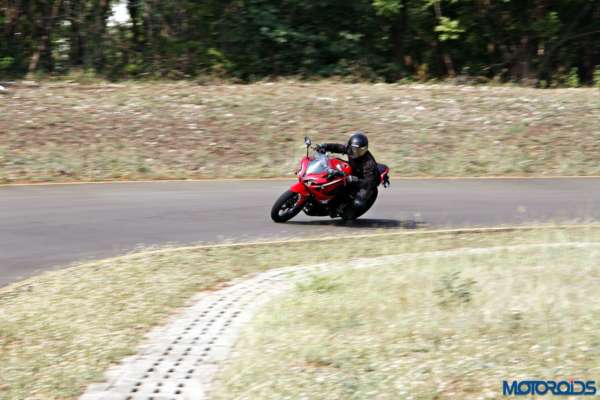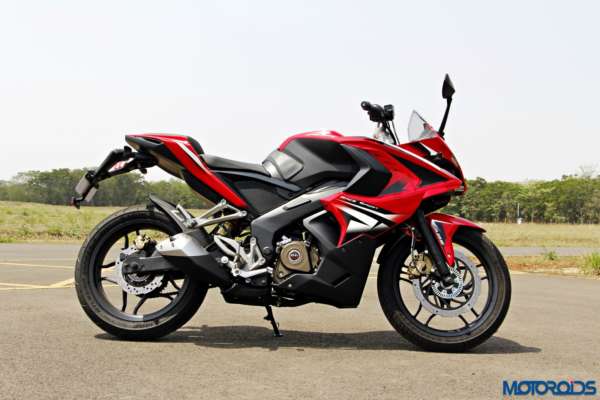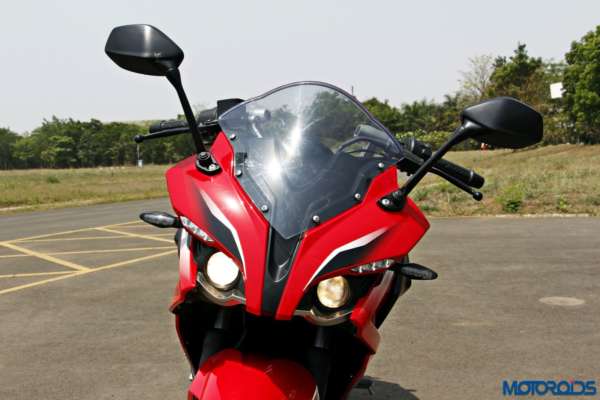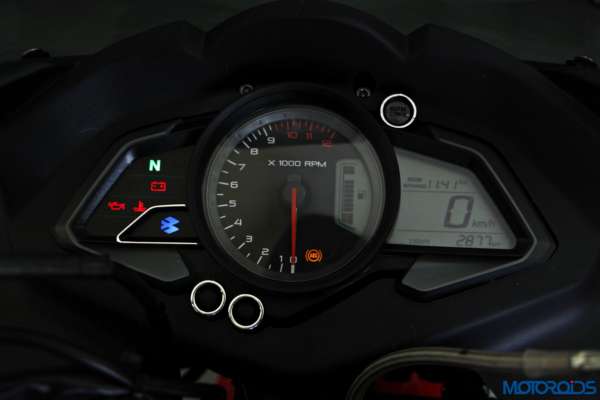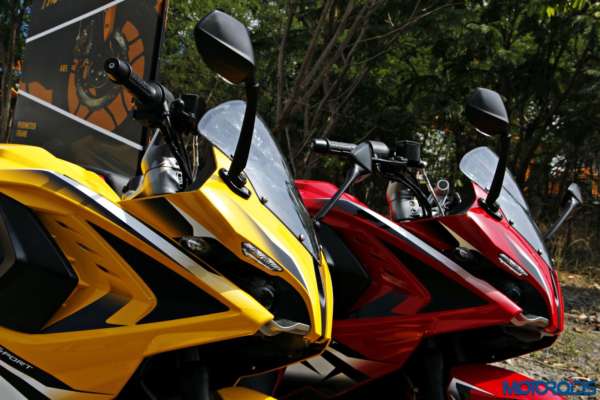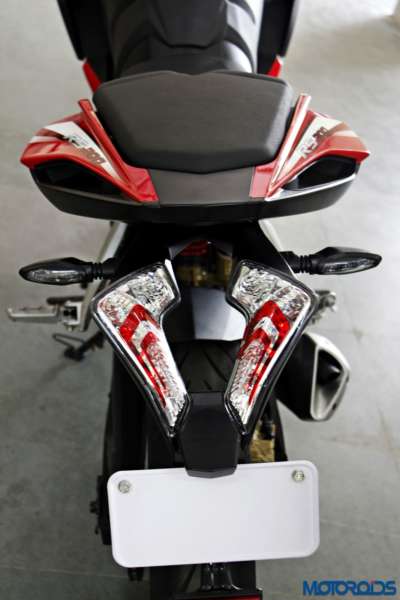“So, how’s it?” gesticulates Rohan, our tracking car pilot for the day, ambling towards me as I coast to a stop at the pit lane at Bajaj Auto’s test track at Chakan, Pune. Still moving, I lift up the lid of my reflective visor to tell him. Behind him, Kalyani, our new photographer, lowers the Canon and I see the grin on her face. Perhaps it is a reciprocation of the grin on my own face, apparently visible inside even this full face helmet. They already know what I have experienced in the last thirty minutes and a dozen-odd laps. This, the Bajaj Pulsar RS200, is a hoot and a half to thrash hard.
First unveiled at the 2014 Delhi Auto Expo, the Pulsar RS200 has been heavily anticipated and with good reason. This is Bajaj’s first fully-faired bike, and full fairings are a particularly interesting source of fascination in the nation. A lot has changed between then and now, and we are getting the RS200 before its bigger sibling the RS400, but whatevs. We will take what we can get.
Despite the radical bodywork, the RS200 isn’t exactly an all-new machine. It is based on the existing Pulsar 200NS street bike, but Bajaj has put a lot of effort into it to make it go as fast as it looks. Did they succeed? We are about to find out.
Images: Kalyani Potekar
Design and Features
Like we said in our first impressions, the styling of the RS200 is a bit polarizing. Comments by readers on the Motoroids site and the general idea of the assembled journalists also echo the same sentiment.
The first thing that strikes you about the RS is the sheer size of it all. The full fairing is huge, and gives the whole bike a forward-biased sporty look. But it is the body panels and the graphics that accentuates its size. It looks like a busier version of the Energica Ego electric sportsbike, but Bajaj’s design team tells us that the RS200 was penned long before the Ego was revealed.
Upfront, you have twin projector headlamps, which is where the resemblance to the Ego and the previous Yamaha YZF-R1 is the most apparent. The left bulb takes care of low-beam, while the right comes on only if you engage high beam. Just above it, like eyebrows, are the wedge-shaped LED pilot lights, and beside it, the indicator stalks with the same design. It looks a bit overdone, and the black and white stickering only serves to make it look busier. The mirrors are mounted on the fairing, but they do a much better job than the nearly useless ones on the Pulsar 220s.
Instrumentation on the RS is also a carryover from the NS, which is not a bad thing at all, as we are big fans of the latter. It is big, legible, and comes packed with all the info you need on the road, but not so much that it overwhelms you as we have seen on some KTMs and Ducatis. Pride of place goes to the large tachometer, with an integrated digital fuel gauge (and ABS indicators on the ABS-equipped model despite the fact that you can’t switch it off – more on that later). Flanking it is the digital speedometer, clock, twin tripmeters and odometer at the right while the left houses the telltale lights including an always backlit Bajaj logo. Perched on top of it all is a bright orange upshift light, that comes into action once you hit the 11,000 rpm redline despite the tacho being marked red at 9,500 rpm.
It is the fairing that elicits the most mixed reactions. There’s just too much going on here, too many styling cues vying for your attention. It’s a furious mix of scoops and cuts and vents, accentuated to their fullest measure by the liberally applied black and white stickers. The fuel tank is the same as the one on the NS, but it now has a thick rubber scratch guard to protect the paint from leathers and what not.
Pride of place goes to the perimeter frame, also borrowed from the 200NS. The split seats are broad and well padded. The tailpiece has handy grab handles integrated into them made to look like air scoops.
At the rear, you get floating split LED tail lamps, with clear-lens indicators beside them. It definitely is a head-turner, although I’m concerned with how well they will hold up to vandals and other unsavory elements.
One thing is for sure, though. The Pulsar RS200’s Transformers-esque styling and angry insect-like front end looks a lot better in the flesh than in pixels. It also appears better proportioned, so if you have been putting off your buying decision solely because of how it appears in the pictures, we’d suggest you head down to the showroom and take a look before making a call.
Fit and finish on the RS is top notch, and it is without a doubt, the best built Pulsar to date. Bajaj has come a long way in their production qualities and it reflects here. Everything feels solidly built and the entire bike exudes an air of quality.
Click here for Performance & Efficiency

